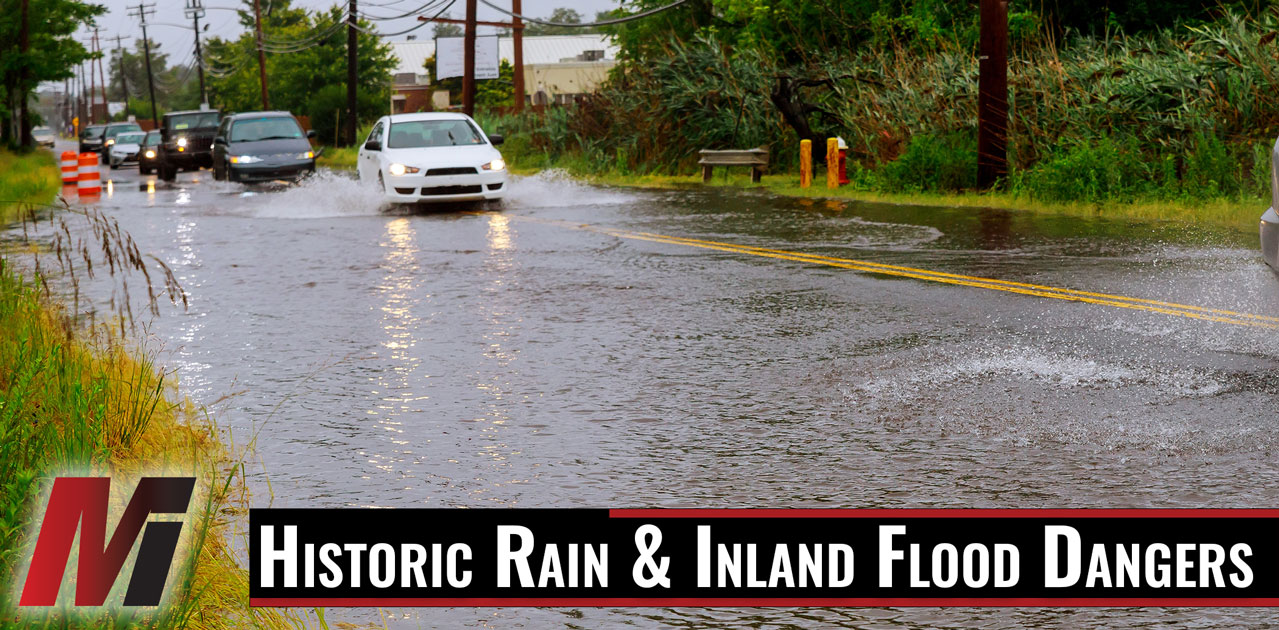Three separate downpours across three states from July 25
th to August 1
st destroyed homes and businesses, killed crops and left at least 39 people dead. Each of these downpours was a one-in-a-thousand historic rainfall event, prompting climate experts to warn that the frequency and intensity of these storms are increasing.In Kentucky, rain fell in excess of 4 inches an hour, totaling 14 to 16 inches in some parts of the state over the course of four days. Heavy rainfall caused mudslides and filled rural valleys with floodwater, resulting in 37 deaths. The storm also caused widespread power outages and communication failures, leaving hundreds of people still unaccounted for.Two people died in Missouri when 7.7 inches of rain fell in a six-hour period. The heavy rainfall forced some residents to flee across flooded roadways in inflatable boats. It also caused flash flooding and damaged crops.Some parts of Illinois saw more than a foot of rainfall in 12 hours, causing flash flooding and leaving roughly 30,000 people without power. There were no reported deaths in Illinois.
How to Stay Safe During a FloodAs extreme weather events increase in frequency and severity, it’s important to be prepared. Consider the following flood safety tips to protect you and your loved ones in an extreme weather event:
- Find safe shelter immediately.
- Do not walk, swim or drive through floodwaters.
- Stay off bridges over fast-moving water. Fast-moving floodwaters can wash bridges away without warning.
- Evacuate immediately if instructed by local authorities.
- Never drive around barricades. Local emergency responders use them to keep traffic away from flooded areas.
- Stay in your car if it’s trapped in moving water. If the floodwater begins to rise inside of your car, get on the roof.
The initial damage caused by flooding is only one of the risks associated with heavy rainfall. Standing floodwater can spread infectious diseases, bring chemical hazards and cause injuries. Here are some tips for staying safe after flooding:
- Do not drink floodwater or use it to wash dishes, brush teeth or prepare food. Only use clean, safe water.
- Listen for boil-water advisories. Local authorities will notify the public if your water is not safe for drinking and bathing. During a boil-water advisory, only use bottled, boiled or treated water for drinking and cooking.
- If you evacuated during the flood, only return home when local authorities say it’s safe to do so.
- Avoid driving through areas with standing water. You can lose control of your vehicle in as little as 6 inches of water.
- Wear heavy gloves and protective clothing during clean-ups. Wear face coverings or masks when cleaning mold or other debris.
- Be aware of the risk of electrocution. Never touch electrical equipment if it’s wet or you’re in standing water. Turn off the electricity to prevent electric shock if it’s safe to do so.
For more flood safety tips, visit the Center for Disease Control and Prevention’s website
here.
Contact Marshfield Insurance today to discuss flood safety and insurance!

